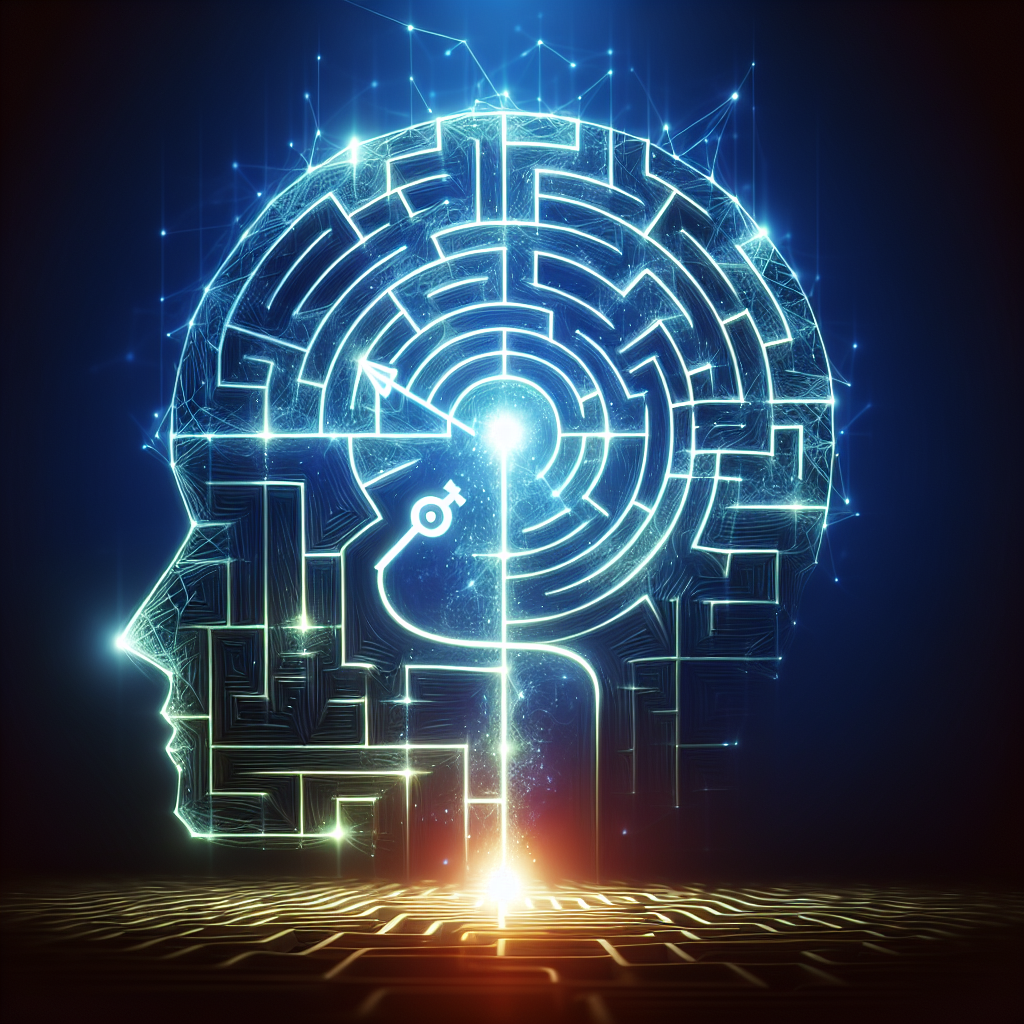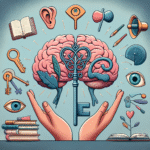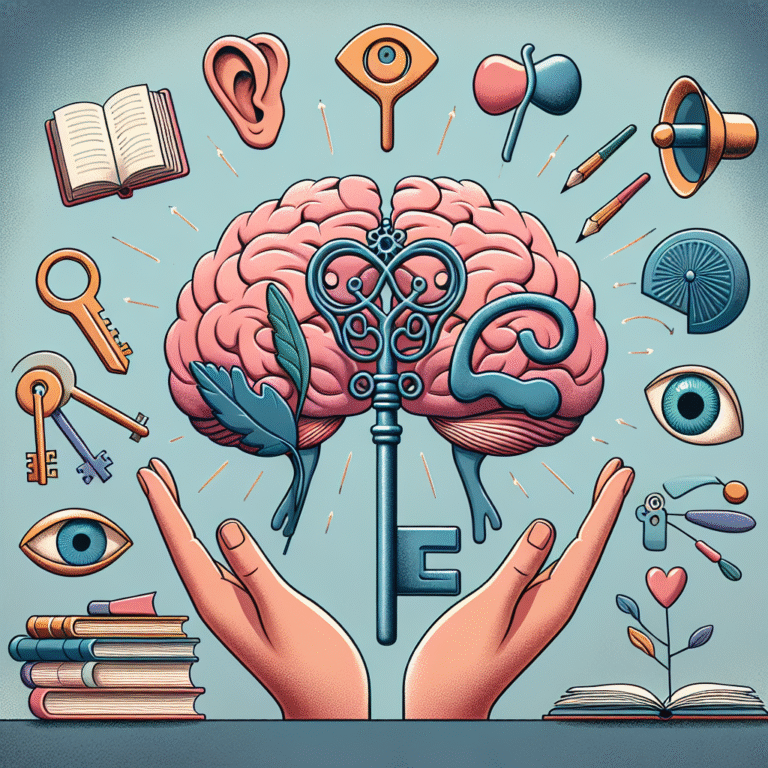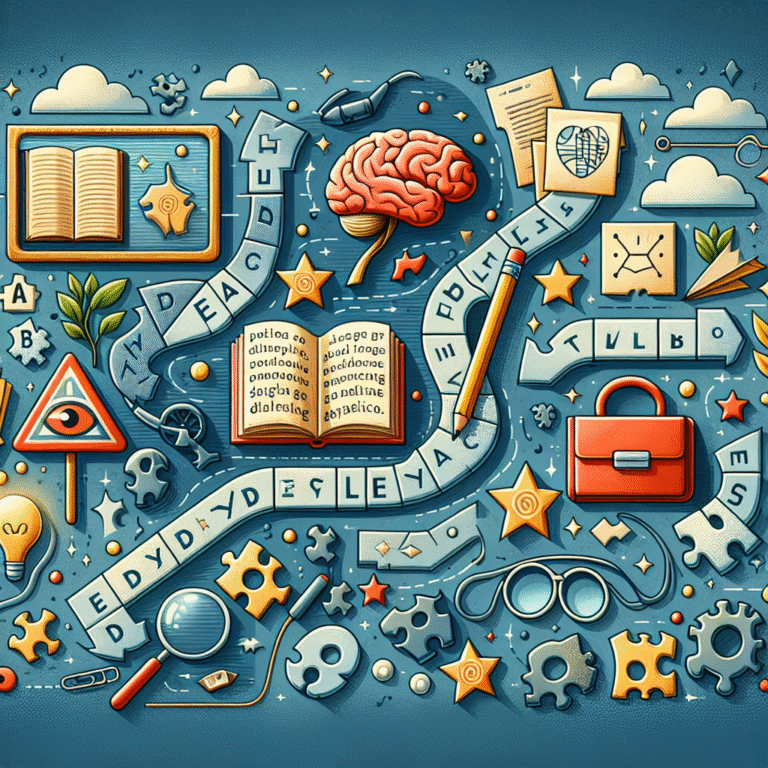
Breaking the Cycle: Addressing Memory Deficits in Learning Disability Interventions – The Ultimate Guide
Introduction
Imagine a child eager to learn but faced with significant barriers due to memory deficits. Too often, students with learning disabilities find themselves trapped in a cycle of frustration and underachievement, unable to demonstrate their true potential. The issue of memory deficits is indeed a pivotal factor in many learning disabilities, limiting not only academic performance but also self-esteem and social interactions. Today, we delve into the intricacies of Breaking the Cycle: Addressing Memory Deficits in Learning Disability Interventions and explore actionable strategies that educators, parents, and therapists can employ to pave the way for successful learning experiences.
Understanding the Memory Deficit in Learning Disabilities
What Are Memory Deficits?
Memory deficits encompass difficulties in processing, storing, and retrieving information. They can manifest in various ways, such as:
- Short-Term Memory Issues: Trouble retaining information for brief periods, affecting daily tasks like following multistep directions.
- Long-Term Memory Challenges: Difficulty in recalling previously learned information, which can hinder academic progression.
- Working Memory Limitations: Inability to manipulate information actively, crucial for reasoning and comprehension.
Types of Learning Disabilities Affected
Learning disabilities, such as Dyslexia, Dyscalculia, and Attention Deficit Hyperactivity Disorder (ADHD), often entail memory deficits that can significantly obstruct learning capabilities. Understanding how these deficits specifically interact with learning disabilities is crucial for developing targeted interventions.
Case Study: Sarah’s Journey
Sarah, a 10-year-old with Dyslexia, struggled with reading comprehension and often forgot the first few words of sentences. In her third-grade classroom, she frequently fell behind her peers. However, after implementing memory-focused interventions—such as mnemonics and visual aids—her reading scores improved remarkably. Sarah’s case exemplifies how Breaking the Cycle: Addressing Memory Deficits in Learning Disability Interventions can transform a student’s experience.
Strategies for Addressing Memory Deficits
1. Individualized Education Programs (IEPs)
What Are IEPs?
IEPs are tailored guidelines addressing the unique needs of students with learning disabilities. They focus on specific learning objectives while also accommodating memory-related challenges.
How to Develop an Effective IEP:
- Assessment: Conduct thorough evaluations to identify specific memory deficits.
- Goal Setting: Establish clear, achievable goals that integrate memory improvement.
- Monitoring: Regularly review the progress and adjust strategies as needed.
| Key Element | Description |
|---|---|
| Assessment | Evaluate memory in context of learning disabilities. |
| Goal Setting | Clearly define short and long-term objectives. |
| Progress Monitoring | Regularly track and adjust interventions. |
2. Multi-Sensory Learning Approaches
Multi-sensory instruction actively engages multiple senses to strengthen memory retention. Techniques may include:
- Visual Aids: Charts, images, and color-coded notes that cater to visual learners.
- Auditory Techniques: Incorporating songs, rhythms, or verbal repetition to enhance auditory memory.
- Kinesthetic Activities: Activities that require movement, like role-playing or hands-on demonstrations.
Case Study: Michael’s Innovative Learning
Michael, a student with ADHD, demonstrated substantial improvements when subjected to a multi-sensory approach to math. He was introduced to hands-on manipulatives, which made abstract concepts more tangible. His improved scores highlight the effectiveness of diverse learning modalities and their capacity for Breaking the Cycle: Addressing Memory Deficits in Learning Disability Interventions.
3. Memory Training Techniques
Here are some valuable techniques designed to enhance memory retention:
- Chunking: Breaking down complex information into smaller, manageable groups.
- Visualization: Encouraging students to create mental images associated with the information they are learning.
- Repetition: Regular review of materials over spaced intervals to combat the forgetting curve.
| Technique | Description |
|---|---|
| Chunking | Organizing information into chunks for easier recall. |
| Visualization | Creating mental images to connect concepts. |
| Repetition | Reinforcing information at spaced intervals to improve retention. |
4. Technology-Based Interventions
Incorporating Technology
In today’s digital world, technology can be a game-changer. Apps and software designed specifically for memory enhancement can offer personalized and engaging experiences. Some effective tools include:
- Flashcard Apps: Applications like Anki or Quizlet can help reinforce vocabulary and mathematical concepts.
- Audio Recording: Allowing students to record their lessons can aid in auditory reinforcement.
- Interactive Games: Utilizing gamified learning platforms can make information retention enjoyable.
Case Study: Emily’s Tech-Savvy Solution
Emily, who struggled with long-term memory recall, began using an educational app that provided engaging tasks and quizzes. With daily use, she saw a marked improvement in her ability to retain information. This underscores the importance of utilizing modern tools in Breaking the Cycle: Addressing Memory Deficits in Learning Disability Interventions.
Building Support Networks
Involving Families and Communities
To fully address memory deficits, collaboration between educators, families, and professionals is essential. Strategies include:
- Workshops for Parents: Helping families understand memory challenges and interventions.
- Community Support Groups: Providing a platform for shared experiences and strategies among parents and caregivers.
An Effective Communication Approach
To maximize learning potential, a clear communication pathway must be established. Suggestions include:
- Regular Meetings: Instituting scheduled meetings between teachers and parents to discuss progress.
- Resource Sharing: Parents can share insights and tools that have been valuable at home.
Conclusion
The journey to Breaking the Cycle: Addressing Memory Deficits in Learning Disability Interventions is crucial for paving the way to not only improved academic performance but also enhanced self-confidence and social skills. By adopting a collaborative approach, utilizing multifaceted learning strategies, and integrating technology, we can foster an environment where every learner has the opportunity to succeed.
As we move forward, let’s continue to push the boundaries of our understanding of learning disabilities and memory, creating an inclusive educational landscape that honors the unique capabilities of all students.
FAQs
1. What are the primary memory deficits associated with learning disabilities?
Memory deficits can range from challenges in short-term recall to long-term retention and working memory struggles, each affecting learning capabilities differently.
2. How can I create a personalized learning plan for my child with a learning disability?
Start with a comprehensive assessment to identify specific needs, then collaborate with educators to set clear, achievable goals tailored to address memory deficits.
3. What role does technology play in memory interventions?
Technology can enhance learning through interactive activities, personalized feedback, and tools designed to engage and reinforce memory skills effectively.
4. Can memory deficits improve over time?
With the right strategies and support, many students can see significant improvements in memory function and learning outcomes.
5. How can parents support their children with memory deficits at home?
Incorporating memory games, promoting regular study schedules, and fostering open communication about struggles can be beneficial for enhancing memory skills.
By addressing memory deficits through targeted interventions, we can truly start Breaking the Cycle and unlocking the potential of learners everywhere.






